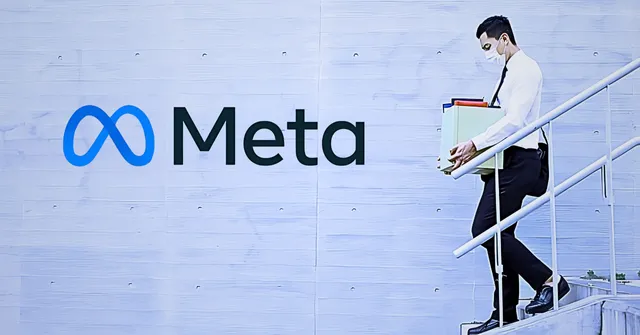In a bold and somewhat unexpected move, Meta Platforms announced a major restructuring of its artificial-intelligence efforts, resulting in approximately 600 job cuts within its AI division. The decision follows an aggressive hiring spree spearheaded by Mark Zuckerberg, and now signals a shift in strategy as Meta recalibrates its priorities in a high-stakes AI arms race. In this article we’ll explore the why, how and what of the move, and what it tells us about the future of AI at Meta and beyond.
Why Meta AI Layoffs Happened
The layoffs stem from a combination of rapid growth, internal structural challenges, and a changing competitive landscape in artificial intelligence. Meta’s AI division expanded fast: it poured resources into research labs, infrastructure, and talent recruitment from companies such as Apple Inc., Google LLC and OpenAI. According to reporting, the cuts affect legacy units such as the Fundamental AI Research (FAIR) group, and AI product and infrastructure teams.
The stated rationale from Meta’s Chief AI Officer Alexandr Wang is that smaller, more agile teams can move faster, make decisions more efficiently and have broader scope per individual contributor. In a memo, he reportedly wrote:
“By reducing the size of our team, fewer conversations will be required to make a decision, and each person will be more load-bearing and have more scope and impact.”
Another factor: Meta is building a new AI unit — Meta Superintelligence Labs (MSL) — and the cuts appear to leave that elite core group mostly untouched. This suggests Meta is shifting resources away from broader, perhaps more diffuse AI initiatives, and focusing on fewer but more strategic bets.
Finally, the move reflects broader industry pressures: large tech firms have been wrestling with cost constraints, slower growth, and the need to demonstrate results in AI beyond hype. For Meta, this means aligning AI investment with tangible business impact rather than purely exploratory research.
How The Layoffs Will Unfold
Meta’s restructuring affects multiple internal teams: the FAIR research arm, AI product teams, and AI infrastructure groups. Sources say the newly formed TBD Lab, part of the MSL umbrella, will not be part of the cuts.
Employees impacted by the layoffs reportedly have the opportunity to apply for other roles within Meta. According to reporting, some affected employees were placed on a “non-working notice period” until late November, and those leaving will receive severance packages (at least 16 weeks’ pay) in some cases.
Importantly, this is less about wholesale job eliminations and more about role redefinition and internal mobility, at least from Meta’s stated position. That said, for many employees this kind of shift is unsettling, especially after a period of high growth and investment in AI roles.
What This Means For Meta’s AI Strategy
The layoffs signal a recalibration of Meta’s AI ambitions. Rather than expanding broadly across many fronts, Meta appears to be consolidating its efforts into fewer, higher-impact initiatives. By focusing on smaller, elite teams (e.g., TBD Lab) and trimming legacy operations, Meta hopes to accelerate decision-making and innovation.
For the AI field, this indicates a maturation: companies are recognising that scale alone (large head-counts, broad research portfolios) may not guarantee breakthroughs or business returns. Instead, leaner teams with clear strategic focus may create a competitive edge.
From a talent perspective, this may drive renewed emphasis on “best in class” hires rather than mass recruiting. Meta has previously offered large compensation packages to poach top AI talent from rivals like Apple and Google.
On the risk side, the move raises questions about morale, institutional knowledge loss, and internal disruption. Cutting teams that have built foundational infrastructure or conducted early-stage research may create gaps. Moreover, for the broader workforce, the message is clear: even in AI, no job is guaranteed.
Implications For The Tech Industry And Workers
For the industry, Meta’s move is a signal: the AI race isn’t just about hiring more people. Efficiency, strategic alignment and execution matter. Other firms may follow suit, refining their structures, right-sizing teams and investing more selectively.
For employees, especially in AI research and product roles, this underscores the importance of adaptability, skills that deliver business impact, and being aligned with company priorities. Layoffs at Meta may heighten anxieties across the sector. Indeed, on forums like Reddit, workers have expressed frustration and fear:
“Imagine working at Meta for years … being told by people who joined few months ago getting paid millions that you are being laid off.”
Finally, for investors and analysts, this refocus may be seen as Meta’s attempt to balance ambition with discipline. Meta had previously forecasted massive AI investments; now, it appears to be managing the cost side more aggressively.
Looking Ahead
What should we watch for next? First: whether Meta’s newly consolidated AI teams deliver results — new models, improved products or monetisation breakthroughs. Second: how the workforce transition is managed — whether talent is retained, redeployed, or lost. Third: how the competitive landscape reacts — will rival firms also shrink breadth of teams and focus intensively on core initiatives?
For workers at Meta and beyond, now is a time to evaluate how their work aligns with strategic priorities, how their skills remain relevant, and whether they can deliver broad-impact contributions in a leaner environment.
In summary, the Meta AI layoffs of around 600 employees reflect a pivotal moment: one where the tech giant is pivoting from broad-based growth to targeted high-impact AI operations. While the long-term results remain to be seen, the move offers a window into how the AI race is evolving — from hiring sprees to strategic discipline.
Read More






 Wednesday, 17-12-25
Wednesday, 17-12-25







